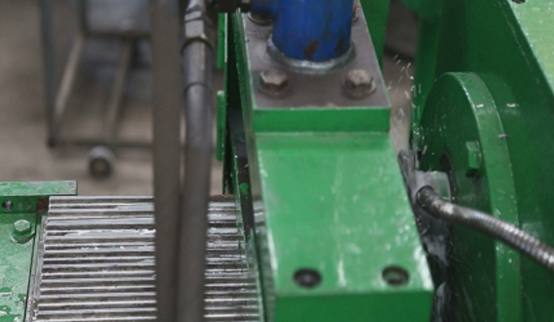 Afrikaans
Afrikaans  Albanian
Albanian  Amharic
Amharic  Arabic
Arabic  Armenian
Armenian  Azerbaijani
Azerbaijani  Basque
Basque  Belarusian
Belarusian  Bengali
Bengali  Bosnian
Bosnian  Bulgarian
Bulgarian  Catalan
Catalan  Cebuano
Cebuano  Corsican
Corsican  Croatian
Croatian  Czech
Czech  Danish
Danish  Dutch
Dutch  English
English  Esperanto
Esperanto  Estonian
Estonian  Finnish
Finnish  French
French  Frisian
Frisian  Galician
Galician  Georgian
Georgian  German
German  Greek
Greek  Gujarati
Gujarati  Haitian Creole
Haitian Creole  hausa
hausa  hawaiian
hawaiian  Hebrew
Hebrew  Hindi
Hindi  Miao
Miao  Hungarian
Hungarian  Icelandic
Icelandic  igbo
igbo  Indonesian
Indonesian  irish
irish  Italian
Italian  Japanese
Japanese  Javanese
Javanese  Kannada
Kannada  kazakh
kazakh  Khmer
Khmer  Rwandese
Rwandese  Korean
Korean  Kurdish
Kurdish  Kyrgyz
Kyrgyz  Lao
Lao  Latin
Latin  Latvian
Latvian  Lithuanian
Lithuanian  Luxembourgish
Luxembourgish  Macedonian
Macedonian  Malgashi
Malgashi  Malay
Malay  Malayalam
Malayalam  Maltese
Maltese  Maori
Maori  Marathi
Marathi  Mongolian
Mongolian  Myanmar
Myanmar  Nepali
Nepali  Norwegian
Norwegian  Norwegian
Norwegian  Occitan
Occitan  Pashto
Pashto  Persian
Persian  Polish
Polish  Portuguese
Portuguese  Punjabi
Punjabi  Romanian
Romanian  Russian
Russian  Samoan
Samoan  Scottish Gaelic
Scottish Gaelic  Serbian
Serbian  Sesotho
Sesotho  Shona
Shona  Sindhi
Sindhi  Sinhala
Sinhala  Slovak
Slovak  Slovenian
Slovenian  Somali
Somali  Spanish
Spanish  Sundanese
Sundanese  Swahili
Swahili  Swedish
Swedish  Tagalog
Tagalog  Tajik
Tajik  Tamil
Tamil  Tatar
Tatar  Telugu
Telugu  Thai
Thai  Turkish
Turkish  Turkmen
Turkmen  Ukrainian
Ukrainian  Urdu
Urdu  Uighur
Uighur  Uzbek
Uzbek  Vietnamese
Vietnamese  Welsh
Welsh  Bantu
Bantu  Yiddish
Yiddish  Yoruba
Yoruba  Zulu
Zulu Conveyor Frame Components for Efficient Material Handling Solutions
Understanding Conveyor Frame Parts A Key Component in Material Handling Systems
In the realm of industrial automation and material handling, conveyor systems play a pivotal role in optimizing productivity and efficiency. At the heart of these systems are conveyor frame parts, which are foundational components that support and guide the entire operation of a conveyor system. This article delves into the structure, significance, and various types of conveyor frame parts, emphasizing their importance in achieving seamless material transport.
What Are Conveyor Frame Parts?
Conveyor frame parts are the structural elements that form the skeleton of a conveyor system. These parts provide the necessary support to other components such as belts, rollers, and drives, ensuring that the system operates reliably and efficiently. Typically made from durable materials like steel or aluminum, these frames are designed to withstand significant loads and resist wear and tear associated with heavy industrial use.
Importance of Conveyor Frame Parts
The significance of conveyor frame parts cannot be overstated. They facilitate several crucial functions within a conveyor system
1. Structural Integrity The frame acts as the backbone of the conveyor system, maintaining its shape and stability under varying loads. This structural integrity is essential for ensuring uninterrupted operations.
2. Alignment and Support Proper alignment of conveyor components is vital for effective material handling. Frame parts help in maintaining the correct positioning of belts and rollers, which reduces wear and improves system longevity.
3. Load Distribution Conveyor frames are designed to evenly distribute loads across the system. This balanced distribution minimizes stress on individual components, enhancing the overall lifespan of the conveyor.
4. Versatility Adjustable conveyor frames allow for customization to accommodate different types of products and production requirements. This versatility makes them suitable for a wide range of industries, from manufacturing to logistics.
Types of Conveyor Frame Parts
conveyor frame parts

Conveyor frames come in various configurations, depending on the specific needs of the operation. Here are some common types
1. Straight Frames These are the most basic type and are used in straightforward conveyor applications. Straight frames provide a level surface for materials to be transported efficiently.
2. Curved Frames Often used in applications requiring directional changes, curved frames allow products to be conveyed around corners or bends seamlessly.
3. Portable Frames Designed for flexibility, portable frames can be easily moved and adjusted as per operational needs. They are particularly useful in temporary setups or environments requiring frequent reconfiguration.
4. Heavy-Duty Frames Constructed from robust materials, heavy-duty frames are designed to handle exceptionally high loads. These frames are typical in environments where substantial weight is a factor, such as in mining or heavy manufacturing.
5. Modular Frames Increasingly popular for their customizability, modular frames allow for easy reconfiguration and expansion. This adaptability is essential for businesses that may need to modify their production lines over time.
Maintenance and Durability
To ensure longevity and efficiency, regular maintenance of conveyor frame parts is crucial. This includes checking for signs of wear, ensuring all connections are secure, and cleaning any debris that might impede operation. Many manufacturers design frames with maintenance in mind, providing features that simplify inspection and repairs.
Conclusion
In summary, conveyor frame parts are indispensable components that significantly contribute to the effectiveness of material handling systems. Whether in manufacturing, warehousing, or distribution, understanding the types, functions, and maintenance needs of these frames is essential for optimizing conveyor operations. As industries continue to evolve, the innovation within conveyor frame parts will likely play an increasingly vital role in enhancing efficiency and supporting diverse applications. Investing in high-quality frames can lead to improved productivity and reduced operational costs, underscoring their importance in the industrial landscape.
-
Revolutionizing Conveyor Reliability with Advanced Rubber Lagging PulleysNewsJul.22,2025
-
Powering Precision and Durability with Expert Manufacturers of Conveyor ComponentsNewsJul.22,2025
-
Optimizing Conveyor Systems with Advanced Conveyor AccessoriesNewsJul.22,2025
-
Maximize Conveyor Efficiency with Quality Conveyor Idler PulleysNewsJul.22,2025
-
Future-Proof Your Conveyor System with High-Performance Polyurethane RollerNewsJul.22,2025
-
Driving Efficiency Forward with Quality Idlers and RollersNewsJul.22,2025





























